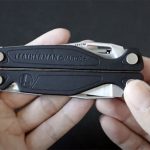Footwear vendors log modest growth as consumers redefine value.
With the 2008 “How America Shops” study from The SportsOneSource Group now complete, a clear trend has emerged that suggests consumers, now more than ever, are looking for the best price when deciding where and how to shop for footwear. However, they are looking for product and service, as well. It is therefore not surprising that data gleaned from the cash registers of the markets retailers should imply a similar trend.
According to retail point-of-sale data compiled by SportScanINFO, Sport Footwear sales were relatively flat for the year-to-date period through the retail fiscal month of June. Sales growth focused around the two ends of the price and product spectrum with increases in either the sport specialty market-where the NPR crowd still shops with less apparent concern for some of the macro-economic trends facing the country-or the value channels that appear to be drawing consumers away from the middle.
KIDS SEND PARENTS IN SEARCH OF VALUE AT FAMILY FOOTWEAR
Expanded value propositions abound within the family footwear and discount/mass channels as more brands dip their toes into the water and follow the lead taken by market leader Nike in the mid-tier channel of distribution. Consumers shopping the racks at a family retailer today will find more brand and product availability, including a significant amount of exclusive product from market leaders, that has helped push average selling prices up more than a dollar per pair in the channel.
Family Footwear was the strongest channel for Sport Footwear thus far this year, with sales increasing in the low-teens when measured in dollars as consumers sought the best deals at the best prices when the tax rebates checks started to burn holes in their pockets. Though sales increased for all genders in the channel, growth was driven by kids, with sales increasing more than 20 percent for the period. The mens and womens businesses both increased in the high-single-digits, but the channels early adoption and continued expansion of skate styles brought about the strong overall channel growth. The addition of Heelys this year helped push sales up a bit, as well. Sandals provided a boost to family footwear, too, rising in the high-single-digits in dollars with average selling prices increasing at a slightly faster rate.
FULL-LINE RETAILERS FOCUS ON THE ATHLETE
Full-line sporting goods retailers saw the weakest overall results in Sport Footwear for the period, with sales decreasing in the mid-single-digits and average selling prices declining slightly. The majority of the decline in the channel can be attributed to Heelys sales failing to come anywhere near the post-Holiday levels seen in early 2007. Sport Footwear sales, excluding the Wheeled Footwear category, rose 1.3 percent in dollar terms. However, Skate Footwear itself was down in the mid-single-digits when measured in dollars for the YTD period, though the categorys average selling prices increased in the mid-teens. Some of this trend can be attributed to the broader distribution of once-core skate brands, such as Etnies and DC, moving more aggressively into the family footwear and mall channels, where the product wall (or table) offers more opportunities. The shift suggests another potential trend at full-line, as the big box retailers shift their focus to fitting athletes with the shoes they need to participate in their chosen sport, while utilizing their purchasing power to offer product at lower prices.
CLASSICS REBOUND AT THE MALL-BUT DONT GET TOO EXCITED
Though Basketball provided a slight boost to full-line retailers, it was just the opposite at mall specialty, where product launches drove spikes in sales from week to week, but were unable to match year-ago introductions or liquidations on an aggregate basis. Basketball sales decreased in the mid- to high-single-digits in both dollars and units for mall specialty retailers, contributing to a decline in total Sport Footwear sales for the channel when measured in dollars. Nearly offsetting the decline in Basketball was strong growth in Classics for mall specialty, but the category has hardly shed its negative image from declining sales over the last two years. Instead, the category has seen its footprint change a bit from basic white leather footcoverings to a more controlled distribution of core styles such as the Nike Air Force 1 and the Adidas Superstar, and more fashion re-releases such as the Nike Cortez. For the year-to-date period, the SSI data suggests that the Classics category has seen sales increase nearly 10 percent at the mall, with average selling prices surging more than $4 a pair versus the year-ago period.
Some of the growth in Skate and Classics are also attributed to a shifting consumer taste away from the low-profile styles that dominated the lifestyle fashion athletic market over the last few years.
Sales growth at the mall was also stymied by tough comparisons against heavy inventory liquidations in late Spring last year. The good news is that as the year progresses, the mall will get back to selling better, more performance-oriented product that carries higher price-points, and margins are expected to show solid improvement over last year. Average selling prices were up nearly $2 a pair in the mall specialty channel for the five-month year-to-date versus last year.
“Last year and the early part of 2008 were repositioning periods for the mall retailers,” notes James Hartford, president and CEO of The SportsOneSource Group, which tracks market trends in the active sports lifestyle market. “The big guys cleared out old inventories, shuttered under-performing doors, and found a consumer starved for new product innovation and design. We see a very good back-half ahead as the brand leaders develop more targeted approaches with more exclusive products across a number of key trade channels of distribution.”
Though average selling prices for Sport Footwear increased when looking at the overall picture, the suggestion is that that growth will slowly start to plateau, possibly in the back-half of the year as consumers continue to search for the lowest price and highest value propositions when it comes time to lace up. Only those retailers specializing in the best product for a given sport, fashion, or price point will see success in both sales and average selling price growth to finish out this fiscal year.















